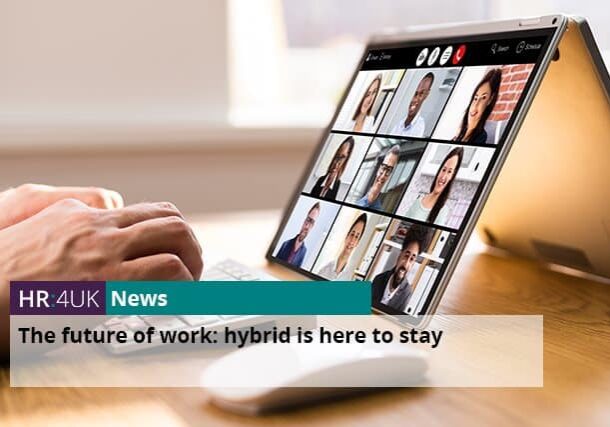The future of work: hybrid is here to stay

COVID-19 forced businesses into the greatest working from home experiment history has ever witnessed. Almost overnight, safety superseded productivity: businesses shut their offices to try and prevent the spread of COVID-19. Home offices were set up in the kitchen, living room, or garden shed and the phrase, “I don’t think your mic is on,” became common language in zoom meetings. Little did we know, this way of working would become the norm and despite practice, even today, we still need to be reminded at times to turn our mics on.
Hybrid working
Prior to the pandemic, companies typically had employees who were deemed office-first or remote-first. For office-first employees, working from the office five days a week was common practice and for remote-first employees, their primary option was to work remotely. A clear cut distinction does not necessarily exist anymore and concepts such as hybrid workinghave emerged.
Hybrid working is a model that affords employees a degree of flexibility in terms of where and when they work. Employees are able to distribute time between the office, their living room, their local coffee shop or anywhere!
Since COVID-19, we have seen an increase in employers adopting the hybrid working policy for their employees. Current statistics have revealed that 29% of organisations have implemented a hybrid working policy for their employees and 32% have hybrid working for some employees, with the remainder still being in the office.
Potential discrimination claims
Although hybrid working is still in its relative infancy, it is a concept many of us are well accustomed to. But, how easy could it be to exclude the remote working employees from the good practices that employees are afforded for attending the work place?
Ask yourself the following question – are you reviewing and adhering to the Hybrid Policy that you have put in place? If not, you could be faced with potential discrimination claims in the future.
Key points of the policy to be adhered to:
- An employer has to be clear at all times with their expectations regarding Hybrid working e.g. what percentage of time is spent at home compared to the office.
- Employers need to have considered the annual remote working allowance of £6.00 per week.
- Employees are clear on the expectations in terms of GDPR. It is important that they are effectively communicated to regarding GDPR and that compliance is periodically checked.
Where could we see potential claims arise?
It is also important to be mindful about the following factors:
- Health and safety – this needs to be a major consideration as there is the risk of potential claims in the future. You must ensure your employees are aware that they need to report health issues such as back pain, any accidents or incidents that happen whilst working at home. These health issues need to be reported by the employee as if they were working in the work-place, and importantly, that corrective action is taken and documented.
- Discrimination claims – these could be raised in relation to certain employees with protected characteristics being under represented in the workplace. Already, it has been identified that more female, disabled and older employees find it better to work from home.
- Missed opportunities – the potential of hybrid workers missing out on additional learning and development. It is important the business recognise the need for providing face to face and remote training of equally high quality.
- Employees feeling distant – there is the risk of remote employees feeling, ’no sense of belonging’ as they are missing out on the informal office chat and office camaraderie. In the worst case scenario, this can lead to a lack of trust between employees working in the office and employees working at home. To address this issue, employers need to emphasise the importance of understanding the impact of each other’s work. Nobody should be thinking in isolation. Employees in the office and at home should be encouraged to speak to each other periodically during the day via zoom or teams, to ensure the sense of belonging.
Statistics on remote working are already emerging from the Office of National Statistics and show employees working from home are:
- 50% less likely to be promoted over their peers who work from the office
- 38% less likely on average to receive a bonus compared with those that have never worked from home
- On average work 6 hours unpaid overtime compared to 3.6 hours for those not working from home
There is clearly a risk of indirect discrimination claims if it is proven that an employer disadvantages those working from home over those working in the office.
Specifically, there is a risk of an indirect discrimination claim if an employer applied a provision, criterion or practice that puts an employee with a protected characteristic at a disadvantage if the employer cannot reasonably justify their actions.
Don’t leave yourself exposed to these potential claims. Speak to one of our expert advisors today at HR:4UK for more details.
Angela Clay
A qualified employment law solicitor and our managing director, Angela has unparalleled legal expertise and decades of experience and knowledge to draw from. She’s a passionate speaker and writer that loves to keep employers updated with upcoming changes to legislation, and is a regular guest speaker on BBC Leicester Radio.




